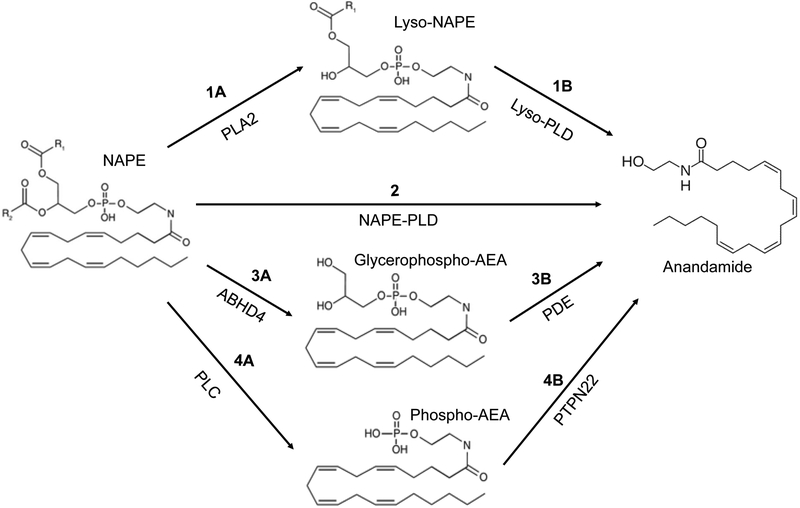Figure 1.
Biosynthetic pathways of anandamide. Anandamide (AEA) can be generated from N-arachidonoyl-phosphatidylethanolamine (NAPE) by 1) release of Lyso-NAPE via phospholipase A2 (PLA2) followed by cleavage by Lyso-phospholipase D (Lyso-PLD), 2) by NAPE-PLD, 3) by ABHD4-catalyzed formation of glycerophospho-AEA followed by phosphodiesterase (PDE), or 4) by release of phospho-AEA by phospholipase C followed by dephosphorylation by PTPN22. The pathway required for synthesis of AEA in the kidney is unknown.

